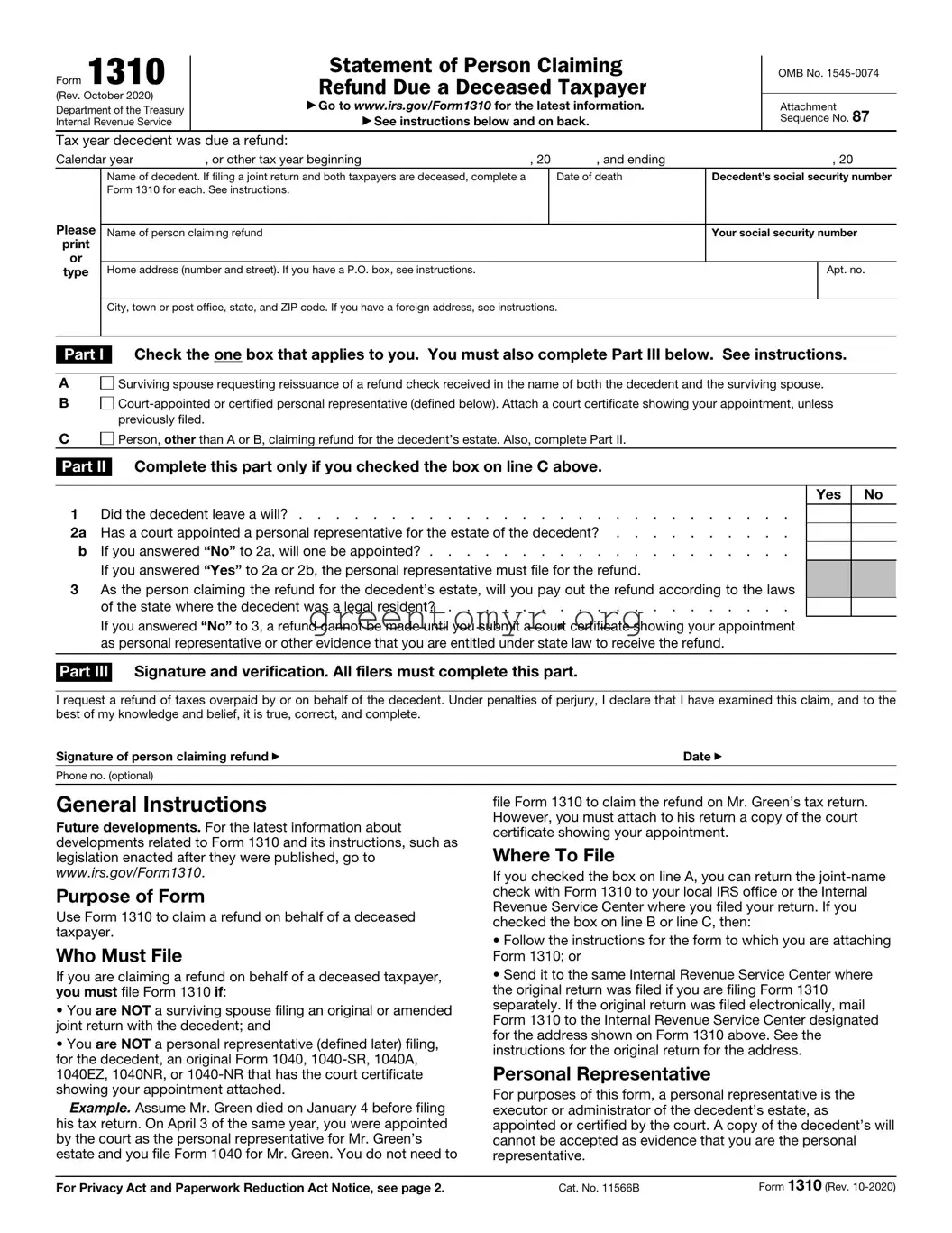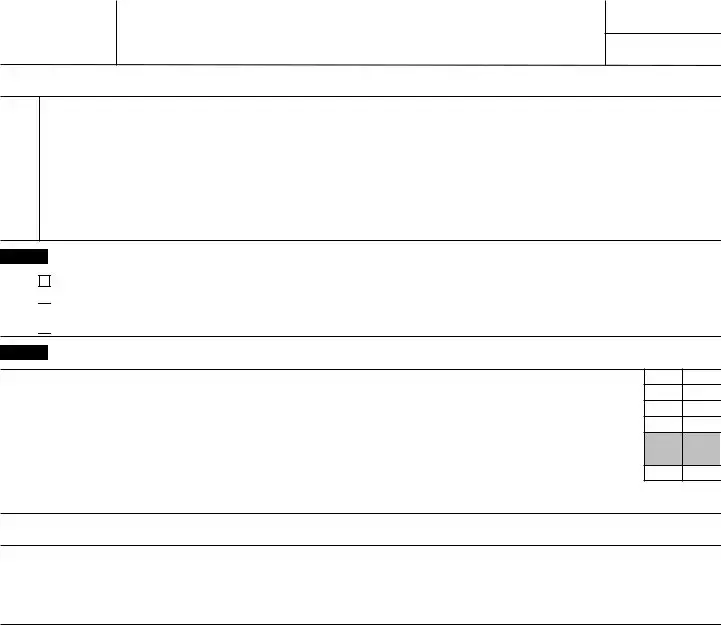Additional Information
For more details, see Death of a Taxpayer in the instructions for your return, or get Pub. 559, Survivors, Executors, and Administrators.
Specific Instructions
Name of Decedent
If you are filing a joint return for spouses who are both deceased and you are required to file Form 1310 (see Who Must File, earlier), you must do the following.
•Complete a separate Form 1310 for each spouse.
•Attach both of these completed Forms 1310 to the return.
Note: If a refund is due, following these steps will assist in the timely release of the refund.
P.O. Box
Enter your box number only if your post office does not deliver mail to your home.
Foreign Address
If your address is outside the United States or its possessions or territories, enter the information in the following order: city, province or state, and country. Follow the country’s practice for entering the postal code. Do not abbreviate the country name.
Line A
Check the box on line A only if you received a refund check in your name and your deceased spouse’s name. You can return the joint-name check with Form 1310 to your local IRS office or the Internal Revenue Service Center where you filed your return. A new check will be issued in your name and mailed to you.
Line B
Check the box on line B only if you are the decedent’s court- appointed or certified personal representative claiming a refund for the decedent on Form 1040X (1040-X beginning with the January 2020 revision), Amended U.S. Individual Income Tax Return; or Form 843, Claim for Refund and Request for Abatement. You must attach a copy of the court certificate showing your appointment. But if you have already sent the court certificate to the IRS, complete Form 1310 and write “Certificate Previously Filed” at the bottom of the form.
Line C
Check the box on line C if you are not a surviving spouse requesting reissuance of a refund check received in your name and your deceased spouse’s name and if there is not a court- appointed or certified personal representative. You must also complete Part II. If you check the box on line C, you must have proof of death.
The proof of death is a copy of either of the following.
•The death certificate.
•The formal notification from the appropriate government office (for example, Department of Defense) informing the next of kin of the decedent’s death.
Do not attach the death certificate or other proof of death to Form 1310. Instead, keep it for your records and provide it if requested.
Example. Your father died on August 25. You are his sole survivor. Your father did not have a will and the court did not appoint a personal representative for his estate. Your father is entitled to a $300 refund. To get the refund, you must complete and attach Form 1310 to your father’s final return. You should check the box on Form 1310, line C; answer all the questions in Part II; and sign your name in Part III. You must also keep a copy of the death certificate or other proof of death for your records.
Lines 1–3
If you checked the box on line C, you must complete lines 1 through 3.
Privacy Act and Paperwork Reduction Act Notice
We ask for the information on this form to carry out the Internal Revenue laws of the United States. This information will be used to determine your eligibility pursuant to Internal Revenue Code section 6012 to claim the refund due the decedent. Code section 6109 requires you to provide your social security number and that of the decedent. You are not required to claim the refund due the decedent, but if you do so, you must provide the information requested on this form. Failure to provide this information may delay or prevent processing of your claim. Providing false or fraudulent information may subject you to penalties. Routine uses of this information include providing it to the Department of Justice for use in civil and criminal litigation, to the Social Security Administration for the administration of Social Security programs, and to cities, states, the District of Columbia, and U.S. commonwealths and possessions for use in administering their tax laws. We may also disclose this information to other countries under a tax treaty, to federal and state agencies to enforce federal nontax criminal laws, or to federal law enforcement and intelligence agencies to combat terrorism. You do not have to provide your phone number.
You are not required to provide the information requested on a form unless the form displays a valid OMB control number. Books or records relating to a form or its instructions must be retained as long as their contents may become material in the administration of any Internal Revenue law. Generally, tax returns and return information are confidential, as required by Code section 6103.
The average time and expenses required to complete and file this form will vary depending on individual circumstances. For the estimated averages, see the instructions for your income tax return.
If you have suggestions for making this form simpler, we would be happy to hear from you. See the instructions for your income tax return.



 Person,
Person, 